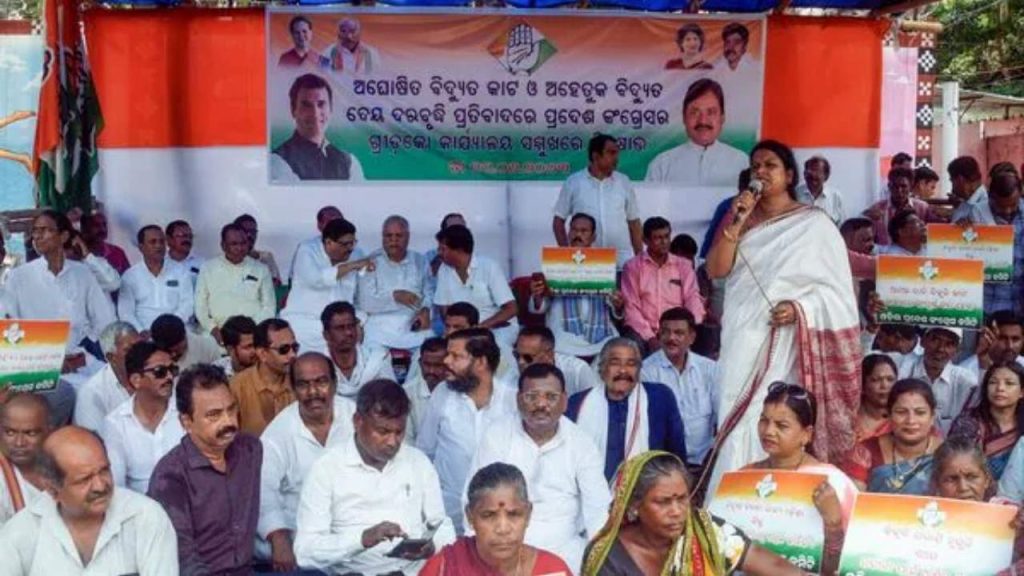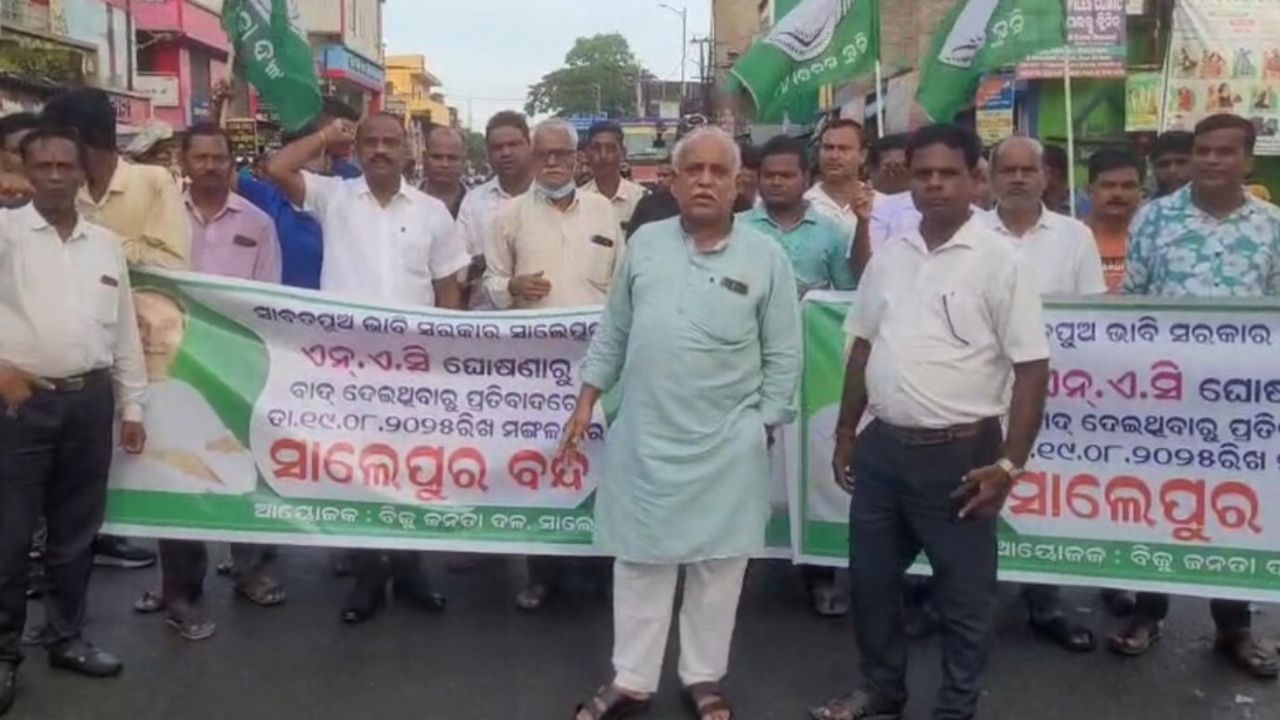In recent weeks, political tensions in the Indian state of Odisha have risen as Congress leader Rahul Gandhi made powerful claims regarding the state’s resources. Speaking at the “Samvidhan Bachao” rally in Bhubaneswar on July 11, 2025, Gandhi accused both the Odisha state government and the central BJP-led administration of systematically looting the state’s valuable resources, including land, forests, and the very future of its people. His comments have sparked controversy, shedding light on issues of environmental degradation, corporate land acquisitions, and the growing concerns about the welfare of local communities.

Gandhi’s allegations aren’t just a matter of political posturing; they are rooted in tangible developments that have caught the attention of local communities and environmentalists. According to him, a few billionaires—notably Adani and Ambani—are taking advantage of the state’s land and resources at the expense of its citizens, leaving Odisha’s future in jeopardy. To understand the gravity of his statements, we need to break down these claims and assess the ongoing issues in Odisha, as well as their potential consequences on the state’s environment, economy, and people.
Congress Leader Claims Odisha’s Land
| Key Point | Data/Stat Information | Source Link |
|---|---|---|
| Land Encroachment | 405 sq km of forest land under encroachment in Odisha | Odisha TV |
| Land Acquisition by Adani | Adani Group purchases land near Gandhamardan Hills for afforestation, raising concerns about mining plans | Economic Times |
| Illegal Constructions on Forest Land | National Green Tribunal issued notices for illegal constructions in Jajpur District | New Indian Express |
| Political Reactions | Congress and BJD criticize the state government’s policies | UNI India |
The issue of land, forests, and resources being “stolen” in Odisha is not just a political matter—it’s a deep concern for the environment and the people who depend on these resources for survival. While the state government and corporations may argue that these developments are necessary for progress, it’s crucial to ensure that they do not come at the cost of indigenous rights, environmental health, and social equity. By strengthening laws, encouraging transparency, and supporting local communities, Odisha can navigate these challenges without sacrificing its future.
Understanding the Allegations: What’s Really Going On in Odisha?
Gandhi’s statements are primarily centered on three major issues:
- Encroachment of Forest Land: Government data reveals that over 405 square kilometers of forest land in Odisha are currently under encroachment. This includes both urban encroachment and illegal settlements in forest areas. The most affected district is Nabarangpur, where more than half of the encroached land is located. Such land grabbing has serious consequences for biodiversity and local communities who rely on these resources.
- Land Acquisition by Corporations: One of the most controversial points raised by Gandhi was the Adani Group’s land acquisition near the ecologically sensitive Gandhamardan Hills. The region is vital for both wildlife and forests, but the Adani Group claims it is acquiring land for afforestation projects. However, local communities, environmentalists, and political parties are concerned that this might be a cover for potential mining activities, which could destroy the fragile ecosystem. Despite assurances from the company, the fear of environmental destruction persists.
- Illegal Constructions on Forest Land: The National Green Tribunal (NGT) has issued notices against illegal constructions taking place on forest land, particularly in Jajpur district. This highlights a growing concern about unchecked development in the state and the violation of environmental laws. These constructions not only degrade the environment but also affect the livelihood of tribal communities who traditionally depend on these forests.
Why Does This Matter?
The situation in Odisha is a prime example of how environmental degradation and unchecked corporate influence can create complex challenges for the local population, ecosystems, and economy. On the one hand, the state government seeks to boost economic growth through industrial development, but on the other, this often comes at the cost of natural resources that are vital for the survival of millions of people.
Local communities are increasingly frustrated, fearing the loss of their ancestral lands and livelihoods. As the Adani Group and other corporations acquire large tracts of land, the question arises: Who benefits from these developments? And who is left behind?
The Environmental Impact: A Growing Crisis
When looking at the environmental implications of these actions, it’s clear that Odisha’s forests and land resources are at serious risk. The state is home to some of India’s most important forest ecosystems, which are essential for:
- Biodiversity Conservation: Odisha’s forests provide sanctuary to various wildlife species, including tigers, elephants, and numerous bird species. Encroachment and deforestation threaten these habitats.
- Climate Regulation: Forests play a critical role in carbon sequestration, helping to combat climate change. Deforestation in Odisha could significantly impact global climate patterns.
- Water Resources: Odisha’s forests help in maintaining the state’s water cycle, which is vital for the agriculture-dependent economy.
Given the state’s dependence on these resources, any move that threatens their integrity could lead to significant economic setbacks, particularly for rural populations.
How Does This Affect Odisha’s People?
The heart of this issue lies in the marginalization of local communities, particularly the tribal populations who have lived on these lands for generations. They depend on forests for food, fuel, and shelter, and many have been protesting against the encroachment of their lands.
For instance, in Nabarangpur, where much of the forest land is under encroachment, local communities have raised concerns about losing access to forest produce and traditional farming lands. These changes not only harm their livelihoods but also threaten their cultural heritage.
Moreover, the concentration of land ownership in the hands of a few corporate giants could exacerbate inequality in the state, creating further social and economic divides. As large companies acquire more land, local farmers and communities struggle to hold on to their property rights.
A Call for Action: What Needs to Be Done?
To resolve these issues, several actions can be taken:
- Stronger Enforcement of Land Protection Laws: The government must enforce stricter regulations to prevent illegal encroachments and protect the forests and natural resources. It must also prioritize the rights of local communities.
- Transparent Land Acquisition Processes: Corporate acquisitions, especially those by companies like Adani, need to be scrutinized. The public must be kept informed about the intentions behind these land deals. If the intent is truly afforestation, then the government should ensure that these initiatives are genuine and do not lead to resource depletion.
- Support for Indigenous Communities: The state must work more closely with tribal populations to ensure that their rights are upheld, especially in relation to land ownership and resource management.
- Community-Based Conservation Models: Involving local communities in environmental conservation efforts could yield better outcomes. If local people are given a stake in protecting the land, they are more likely to advocate for its preservation.
Congress Leaders to Hold Separate Meetings with Party Functionaries in Odisha
Frequently Asked Questions
1. What is the significance of the Adani Group’s land acquisition in Odisha?
The Adani Group’s acquisition of land near the Gandhamardan Hills has raised concerns that the company may eventually engage in mining, which could harm the environment. Local communities and environmentalists fear the destruction of ecosystems.
2. How much forest land is currently under encroachment in Odisha?
Approximately 405 square kilometers of forest land are under encroachment, with the Nabarangpur district being the most affected.
3. What is the National Green Tribunal (NGT) doing about illegal constructions?
The NGT has issued notices to stop illegal constructions on forest land in Jajpur district. These constructions are violating environmental regulations and affecting local communities.
4. How can the government help protect Odisha’s resources?
The government should enforce stricter land protection laws, scrutinize corporate land deals, and involve local communities in conservation efforts.





